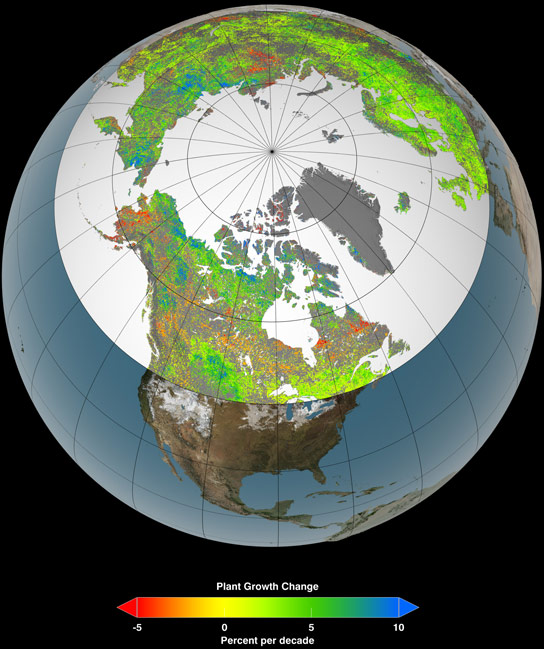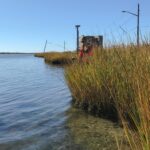There are 26 million square kilometers (10 million square miles) of northern land under vegetation. Over the past 30 years 34 to 41% (9 million square kilometers or 3.5 million square miles) have seen increased plant growth while 3 to 5% have seen a decline. The area of enhanced vegetation is comparable in size to the United States not including Alaska and Hawaii.
The data comes from a new study involving NASA and a university team of international scientists has demonstrated a correlation between surface temperature changes and vegetation and indicates that the plant life of more southerly latitudes has moved 4 to 6 degrees further north.
It would seem obvious to a layman that if temperatures are rising that surface vegetation would be affected. The study which appeared in the March 10 issue of the journal Nature Climate Change reports that northern lands above 50 degrees latitude are getting positive feedback from the diminished changes in the difference between summer and winter temperatures. In other words the extremes of cold are lessening so that difference between summer and winter are more closely akin to those found in more southerly climates. This moderation trend, should it continue, means that the North will become greener. But what will grow will still be impacted by duration of sunlight and precipitation. Remember the Arctic and its opposite, the Antarctic, are cold deserts with moisture tied up in ice and snow and only available to nurture vegetation for a short period of time each year. Also because of glaciation the North has a paucity of well established soil cover because the ice has scraped the rocks clean. In addition many low elevation areas become bogs in the short warming period of summer. One would expect that permafrost melts in such areas will just lead to more extensive swampy ground. So don’t expect a boreal forest to suddenly spring up where currently lichens and moss constitute much of the vegetation.
The study used data collected by satellite from 1982 to 2011. The sources, NOAA’s Advanced Very High Resolution Radiometers onboard polar-orbiting satellites and NASA’s Moderate Resolution Imaging Spectroradiometer on the Terra and Aqua satellites.















